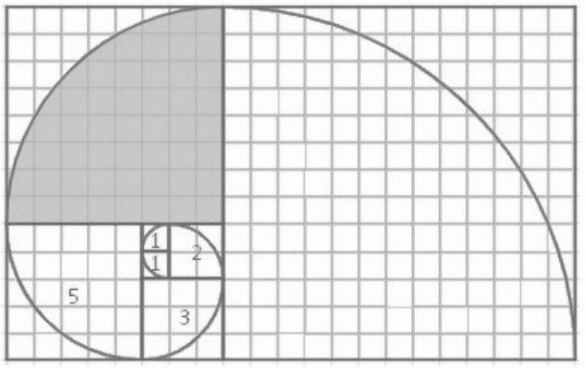Fibonacci sequence is a pattern in which each number is obtained by adding the previous two numbers (except the first 2 numbers).
The pattern is 0,1,1,2,3,5,8,13.......
Shown below is a representation of the first few terms of the Fibonacci sequence in a unit square grid. The terms represent the side lengths of the squares.

What is the area of the shaded sector?
4π sq units
16π sq units
48π sq units
64π sq units
Step by step video & image solution for Fibonacci sequence is a pattern in which each number is obtained by adding the previous two numbers (except the first 2 numbers). The pattern is 0, 1, 1, 2, 3, 5, 8, 13....... Shown below is a representation of the first few terms of the Fibonacci sequence in a unit square grid. The terms represent the side lengths of the squares. What is the area of the shaded sector? by Maths experts to help you in doubts & scoring excellent marks in Class 10 exams.
Updated on:21/07/2023Topper's Solved these Questions
Similar Questions
Knowledge Check
The first three terms of a sequence are 3,1,−1. The next terms is
A2B−3C−527D−59Write the first five terms of the sequences in whose nth terms is :
an=(−1)n−1.5n+1A5 terms of given sequence are
a1=25,a2=−125,a3=625,a4=−3125,a5=15625.B5 terms of given sequence are
a1=25,a2=125,a3=625,a4=3125,a5=15625.C5 terms of given sequence are
a1=−25,a2=125,a3=−−625,a4=3125,a5=−15625.DNone of theseFirst term of a sequence is 1 and the (n+1)th term is obtained by adding (n+1) to the nth term for all natural numbers n, the 6th term of the sequence is
A7B13C21D27
The first three terms of a sequence are 3,3,6 and each term after the sum of two terms preceding it, then the 8th term of the sequence
View SolutionFirst term of a sequence is 1 and the (n+1)th term is obtained by adding (n+1) to the nth term for all natural numbers n, the 6th term of the sequence is
View SolutionIf the first four terms of an arithmetic sequence are a,2a,b and (a−6−b) for some numbers a and b, find the sum of the first 100 terms of the sequence.
View SolutionWrite the first five terms of each of the sequences in Questions 1 to 6 whose nth terms are :
an=2n
View SolutionThe first three terms of a sequence are 3,3,6. Each term after the second term is the sum of two terms preceding it. The 8th term os the sequence is
View Solution
